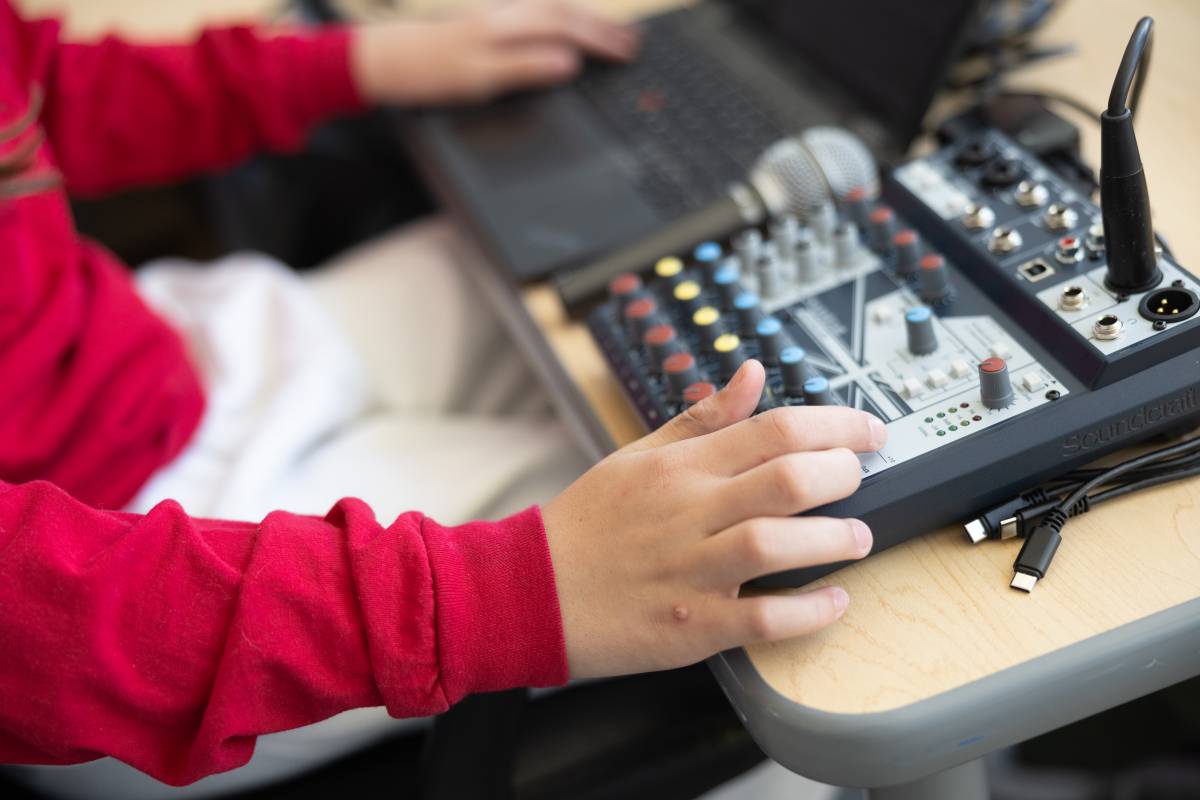Empowering Minds: STEAM at SNACS
This summer, Sierra Nevada Academy Charter School announced the launch of an innovative educational tool, PLAY® Interactive Choice Board Learning Management System. We can’t wait to get this new technology in the hands of our students this August. We recently met up with Rob Ingalls, the Middle School Math, Financial Literacy, and Technology Teacher at Sierra Nevada Academy Charter School. Mr. Ingalls knows firsthand how invested SNACS is in STEAM programs that support learning at all levels.
Coding at SNACS
We know that students being exposed to technology at a young age can have a significant impact on a student’s mathematics achievement, which is why SNACS starts coding with students as young as kindergarten. “Starting with learning basic Javascript coding, SNAC kindergarteners use a block based language,” shared Mr. Ingalls. “We are targeting not only those 21st century skills but also finding ways to increase core subject achievement using STEAM at a young age. Our preschool is even going through the process of having teachers trained in robotics so our 3 and 4 year old students will be exposed to that kind of activity – which I think is extremely unique.”

Digital Choice Boards
Over the past 12 years, SNACS teachers have been using whiteboards and magnets for their choice boards. Using this older technology can require a lot of preparation for our teachers, and it can be difficult to keep an activity engaging. Updating our technology to new digital choice boards will make it easier for centers to be available for students, and it will provide an interface that is more interactive and engaging for kids.
“In particular, having a digital choice board will really boost SNACS ability to provide that personalized learning to students, which is our mission as a school. I think the choice boards will be a great way to bring that choice center time into the ‘modern age’ so to speak,” stated Mr. Ingalls.
Robotics and Automation
Our 6-8th grade students take a Robotics and Automation class during the school year. “There is an automation aspect where lots of students want to build a robot that they use the controller to drive. Taking it to that next level of requiring programming and building in sensors makes the projects so much more involved and the problem solving required is much greater,” Mr. Ingalls writes.
One of the choices for the end of course project is to build an automated Pet Entertainment System that is triggered by a switch or button. The catch? “Students have to design and build the entire system with no given directions.” Mr. Ingalls acknowledged that this can be a bit tricky compared to other units in the class: “Students are used to getting step-by-step directions for the build. For me that is what is cool about the project.” He reports that “students often struggle, but they all learn the design process, even if they don’t have a finished product, they still have a valuable learning experience.”
From designing, iterating, prototyping, testing for several weeks in a row, some groups do not complete the actual build and finalize the project, but they learn so much along the way. “They aren’t heavily assessed on completion of the project but more their participation in collaborating and working through the process with those higher level thinking skills.”

Computer Science
While in Computer Science, students learn the fundamentals of Javascript coding by designing their own “app” or “click to gather” game. “Similar to the Robotics Project, students have learned all the tools and commands for a user to interact with the app but they need to design the interactions from scratch, there are no directions. This ends up being a great demonstration of algebraic thinking because students have a unique approach to coding their app or game that wasn’t explicitly taught in the course, rather grew out of their own synthesis and understanding of the app lab,” explains Mr. Ingalls. “Sometimes this isn’t the most efficient use of code (30 lines that could be 6 lines) but it is still functional, meets the requirements of the project, and was completely student created. This kind of project and learning experience is related to algebraic reasoning – students have to manipulate the variables and pieces of their problem to get it to work; demonstrating there are many paths to the same goal, and your success isn’t dependent on understanding one algorithmic approach to completing a task.”
Ready for your child to take on coding, robotics, automation and computer science? By enrolling at SNACS, our students are open to the world of technology starting with robotics in our preschool, all the way through middle school where our students are writing code and designing and building robots. Join us at SNACS and introduce your child to the world of STEAM. Enroll today for the 2024-25 school year.
About SNACS
Sierra Nevada Academy Charter School (SNACS) is a Tuition-Free Public K-8 Charter School with free preschool options. As Nevada’s first charter school, we have served our community for 25 years as a standout school of choice and personalized learning. We nurture self-directed learners through choice, prioritizing expeditionary learning and offering a unique, proprietary, hands-on P.L.A.Y model (Promoting Learning and Accountability in Youth). Now in a new location, 10 miles north of Reno, SNACS brings the small school experience back to the neighborhood. Education – with a choice! We’re enrolling for Fall 2024-2025.
